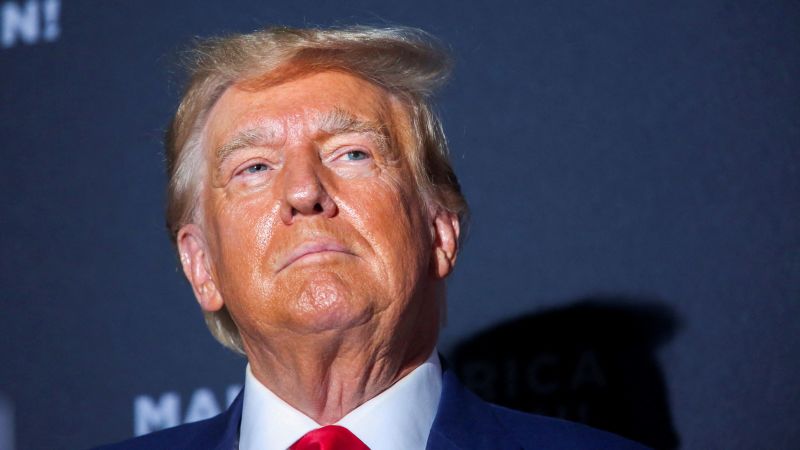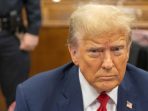CNN
—
Fulton County’s sweeping indictment against former President Donald Trump and 18 additional co-defendants also includes details involving 30 “unindicted co-conspirators” – people who Fulton County District Attorney Fani Willis alleges took part in the criminal conspiracy to overturn the 2020 election.
Some of the co-conspirators are key Trump advisers, like Boris Epshteyn, while several others are likely Georgia officials who were the state’s fake electors for Donald Trump.
One of the unindicted co-conspirators who appears multiple times in the indictment is Georgia’s Republican Lt. Gov. Burt Jones. Willis was barred by a state judge from investigating Jones after she hosted a fundraiser last year for Jones’ Democratic opponent when he was a state senator running for lieutenant governor.
The 98-page document alleges the 30 unindicted co-conspirators, who are not named, “constituted a criminal organization whose members and associates engaged in various related criminal activities” across the 41 charges laid out in the indictment.
“Prosecutors use the ‘co-conspirator’ label for people who are not charged in the indictment but nonetheless were participants in the crime,” said Elie Honig, a CNN senior legal analyst and former federal and state prosecutor. “We do this to protect the identity and reputation of uncharged people – though they often are readily identifiable – and, at times, to turn up the pressure and try to flip them before a potential indictment drops.”
CNN was able to identify some of the co-conspirators by piecing together details included in the indictment. Documents reviewed from previous reporting also provide clues, especially the reams of emails and testimony from the House January 6 Committee’s report released late last year.
CNN has been able to identify or narrow down nearly all of the unindicted co-conspirators:
The indictment refers to Trump’s speech on November 4, 2020, “falsely declaring victory in the 2020 presidential election” and that Individual 1 discussed a draft of that speech approximately four days earlier, on October 31, 2020.
The January 6 committee obtained an email from Fitton sent on October 31 to Trump’s assistant Molly Michael and his communications adviser Dan Scavino, which says, “Please see below a draft statement as you requested.”
The statement Fitton wrote also says in part, “We had an election today – and I won.”
The indictment states that co-conspirator 3 appeared at the infamous November 19, 2020, press conference at the Republican National Committee headquarters in Washington, with Rudy Giuliani, one of the defendants in the case. Epshteyn was there.
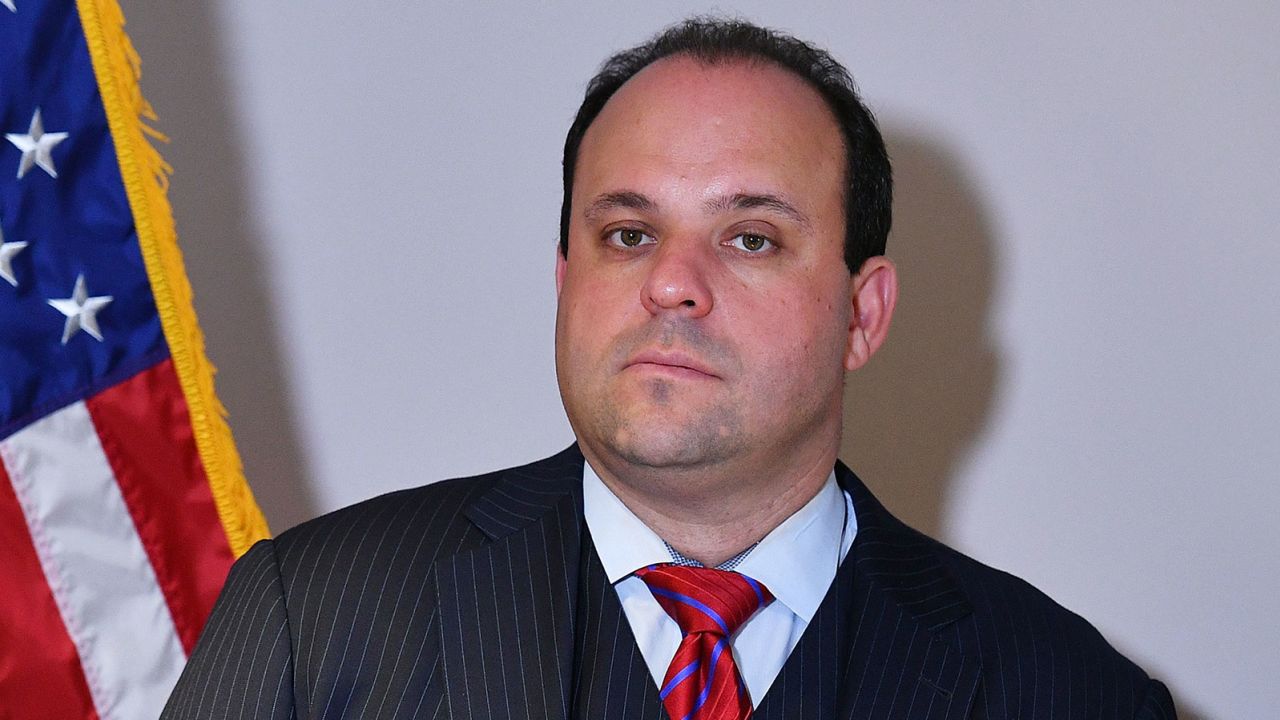
The indictment also includes two emails between co-conspirator 3, John Eastman and Kenneth Chesebro, two lawyers who pushed the strategy of then-Vice President Mike Pence trying to overturn the election on January 6, 2021, including one with a draft memo for options of how to proceed on January 6.
According to emails released by the January 6 committee, Epshteyn was the third person on those emails.
Individual 4 received an email from co-defendant David Shafer, Georgia’s Republican Party chair, on November 20, 2020, that said Scott Graham Hall, a Georgia bail bondsman, “has been looking into the election on behalf of the President at the request of David Bossie,” according to the indictment.
CNN obtained court documents that show Shafer sent this email to Sinners in November 2020: “Scott Hall has been looking into the election on behalf of the President at the request of David Bossie. I know him.” Hall is one of the 19 defendants charged in the indictment.
The indictment notes an additional email from December 12, 2020, from Shafer to Individual 4 advising them to “touch base” with each of the Trump presidential elector nominees in Georgia in advance of the December 14, 2020, meeting to confirm their attendance.
CNN reporting from June 2022 reveals an email exchange between Sinners and David Shafer on December 13, 2020, 18 hours before the group of alternate electors gathered at the Georgia State Capitol.
“I must ask for your complete discretion in this process,” Sinners wrote. “Your duties are imperative to ensure the end result – a win in Georgia for President Trump – but will be hampered unless we have complete secrecy and discretion.”
Kerik’s attorney, Tim Parlatore, confirmed to CNN that his client is the unnamed individual listed in the indictment as co-conspirator 5. The indictment refers to co-conspirator 5 taking part in several meetings with lawmakers in Pennsylvania and Arizona, states Trump was contesting after the 2020 election.
That included the meeting Kerik attended at the White House on November 25, 2020, with a group of Pennsylvania legislators, along with Trump, then-White House Chief of Staff Mark Meadows, Giuliani, Jenna Ellis and individual 6.
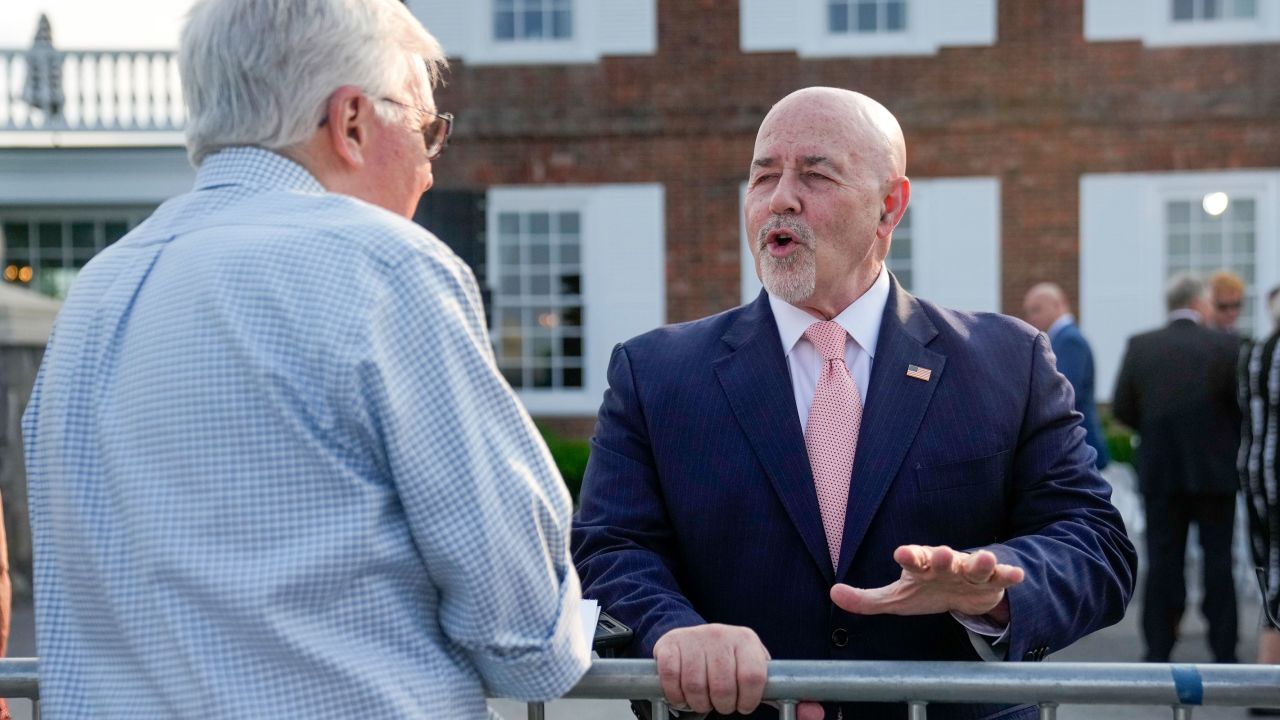
Parlatore took issue with Willis’ definition of co-conspirator in the case of Kerik, saying that the indictment only refers to him in the context of receiving emails and attending meetings.
The indictment says on November 25, 2020, Trump, Meadows, Giuliani, Ellis, Individuals 5 and 6 met at the White House with a group of Pennsylvania legislators.
According to the January 6 committee report, Waldron was among the visitors who were at the White House that day, along with Kerik and attorney Katherine Freiss. Cassidy Hutchinson, former aide to Meadows, explained that their conversation with the president touched on holding a special session of the Pennsylvania state legislature to appoint Trump electors.
The indictment also says on December 21, 2020, Sidney Powell, a defendant in the case, sent an email to Individuals 6, 21 and 22 that they were to immediately “receive a copy of all data” from Dominion’s voting systems in Michigan.
The Washington Post reported last August that the email stated Waldron was among the three people to receive the data, along with Conan Hayes and Todd Sanders.
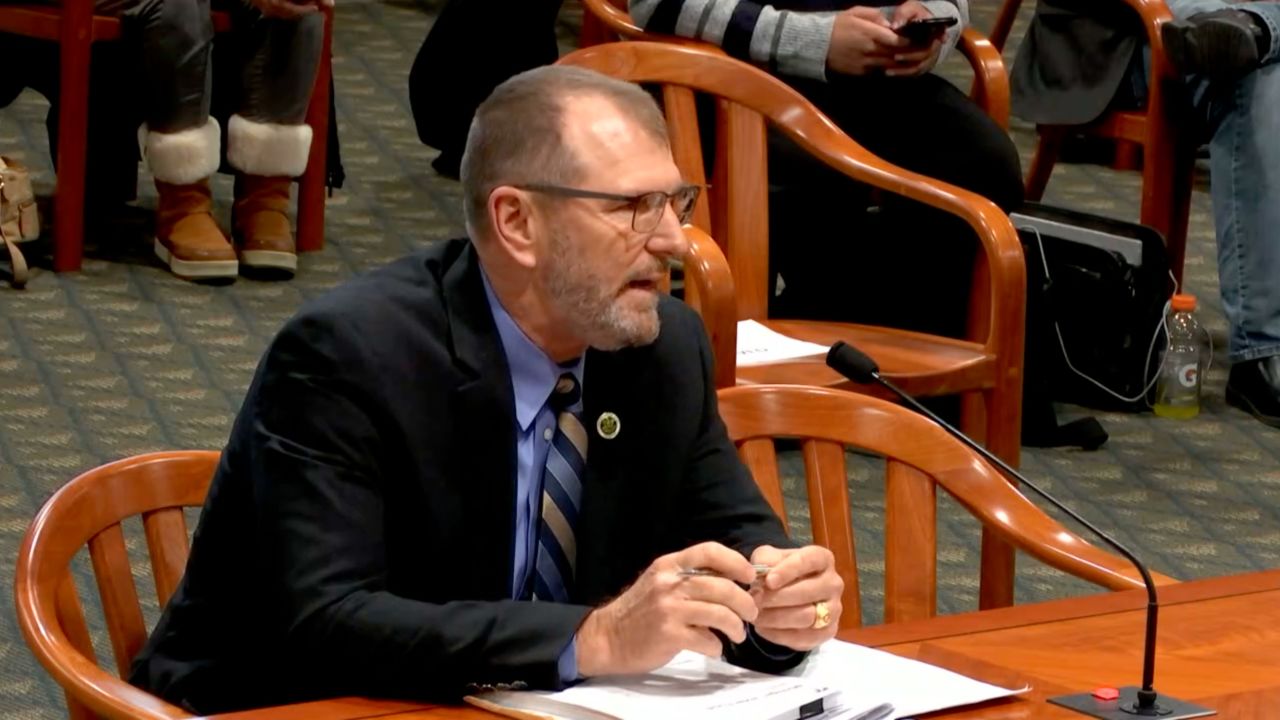
Waldron is the only person who was involved in both the White House meeting and received the Powell email.
The indictment says Giuliani re-tweeted a post from co-conspirator 8 on December 7, 2020, calling upon Georgia voters to contact their local representatives and ask them to sign a petition for a special session to ensure “every legal vote is counted.” The date and content of the tweet match a tweet posted by Jones, who was at the time a state senator.
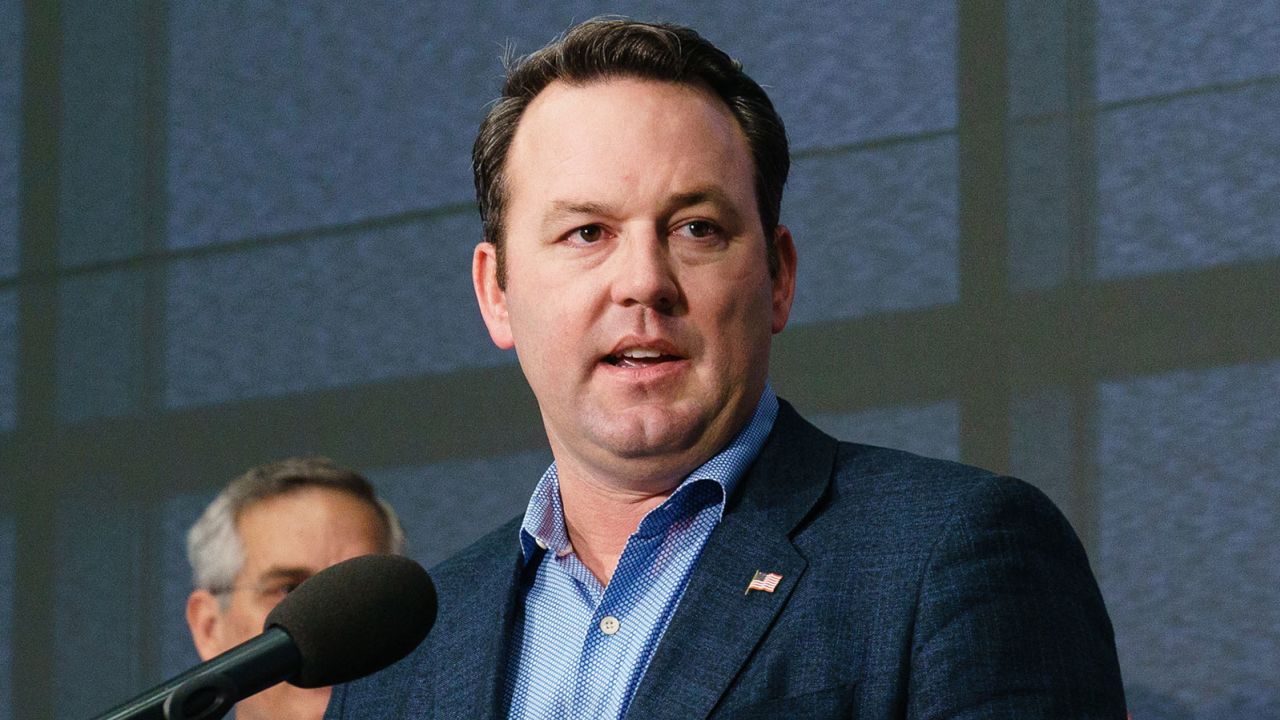
Jones, who was elected lieutenant governor in November, appears more than a dozen times throughout the indictment as co-conspirator 8, including as a fake elector.
After the 2020 election, Jones was calling for a special session of the Georgia legislature, something Gov. Brian Kemp and former Lt. Gov. Geoff Duncan refused to do.
On Thursday, Pete Skandalakis, the executive director of the Prosecuting Attorneys Council of Georgia, told CNN that he will appoint a special prosecutor to investigate Jones’ role in the state’s 2020 election interference case, after a judge blocked Willis from investigating him last year.
The indictment lists several emails sent to co-conspirator 9 related to preparations for the fake electors who met on December 14, 2020, including an email from Chesebro “to help coordinate with the other 5 contested States, to help with logistics of the electors in other States hopefully joining in casting their votes on Monday.”
According to emails obtained by the January 6 committee, that email was sent to an account belong to the Georgia GOP treasurer, which at the time was Brannan.
Co-conspirator 9 is also included in the indictment as one of the 13 unindicted co-conspirators who served as fake electors.
Co-conspirators 10 and 11 are Georgia GOP officials Carolyn Fisher and Vikki Consiglio
The indictment says on December 10, 2020, Ken Chesebro sent an email to Georgia state Republican Chair David Shafer and Individuals 9, 10 and 11, with documents that were to be used by Trump electors to create fake certificates.
The January 6 committee obtained as part of its evidence an email from Chesebro sent on December 10 sent to Shafer and three other email addresses. One is for Carolyn Fisher, the former Georgia GOP first vice chair, one is for the Georgia Republican Party treasurer and one is for the Georgia GOP assistant treasurer, the role Consiglio was serving in 2020.
The email contains attachments of memos and certificates that could be used to help swap out the Biden electors with a slate of electors for Trump.
Both co-conspirators 10 and 11 also served as fake electors in Georgia.
Co-conspirators 2 and 8-19 are the fake electors
Of the 30 unindicted co-conspirators, 13 are listed as the fake electors for Donald Trump, who signed papers “unlawfully falsely holding themselves out as the duly elected and qualified presidential electors from the State of Georgia,” according to the indictment.
Three of the 16 Georgia fake electors were charged in the indictment: David Shafer, Shawn Still and Cathleen Alston Latham.
The other 13 fake electors, according to the fake electors certificate published by the National Archives, are Jones (co-conspirator 8), Joseph Brannan (co-conspirator 9), James “Ken” Carroll, Gloria Godwin, David Hanna, Mark Hennessy, Mark Amick, John Downey, Daryl Moody, Brad Carver, CB Yadav and two others who appear to be Individuals 10 and 11.
Several of the fake electors who were not charged are only listed in the indictment for their role signing on as electors for Trump, while others, like Jones, appear in other parts of the indictment as being more actively involved with the alleged conspiracy.
The indictment says Individual 20 was part of a meeting at the White House on December 18, 2020, with Trump, Giuliani and Powell, known to have discussed the possibility of seizing voting machines.
The December 18 meeting featured prominently during some of the hearings from the January 6 committee. All but two of the outside advisers who attended have been named as co-defendants in the indictment already: former Trump national security adviser Michael Flynn and former Overstock.com CEO Patrick Byrne.
The meeting featured fiery exchanges between Trump’s White House lawyers and his team of outside advisers, including on whether to appoint Sidney Powell as special counsel to investigate voter fraud, according to the indictment and previous details that have been disclosed about the meeting.
The outside advisers famously got into a screaming match with Trump’s White House lawyers – Pat Cipollone and Eric Herschmann – at the Oval Office meeting. Cipollone and Herschmann, along with Meadows, pushed back intensely on the proposals, Cipollone and Herschmann testified to the January 6 committee.
Co-conspirators 21 and 22 are Conan Hayes and Todd Sanders
Co-conspirators 21 and 22 are Conan Hayes and Todd Sanders – who are both affiliated with Byrne’s America Project, a conservative advocacy group that contributed funding to Arizona’s Republican ballot audit. Hayes was a former surfer from Hawaii and Sanders has a cybersecurity background in the private sector.
The indictment says on Dec. 21, 2020, Sidney Powell sent an email to the chief operations officer of SullivanStrickler, saying that individual 6, who CNN identified as Waldron, along with individuals 21 and 22, were to immediately “receive a copy of all data” from Dominion’s voting systems in Michigan.
According to the Washington Post, Conan and Todd were the other two people listed on the email to receive the data.
The final eight co-conspirators listed in the indictment are connected to the effort to access voting machines in Georgia’s Coffee County.
Co-conspirator 25 and 29 are a Cyber Ninjas CEO Doug Logan and analyst Jeffrey Lenberg
The indictment says that Misty Hampton allowed co-conspirators 25 and 29 to access non-public areas of the Coffee County elections office on January 18, 2021. Logan and Lenberg were the two outsiders granted access to the elections office that day by Hampton, according to surveillance video previously obtained by CNN. No one else was given access to the office that day, according to a CNN review of the footage.
The indictment also notes that co-conspirator 25 downloaded Coffee County election data that SullivanStrickler then had uploaded to a separate server. Documents previously obtained by CNN show five accounts that downloaded the data – one account belongs to Logan and none of them belong to Lenberg. Still, CNN could not definitively determine who exactly downloaded the data.
Logan and his company conducted the so-called Republican audit of the 2020 ballots cast in Arizona’s Maricopa County.
The indictment says that co-conspirator 28 “sent an e-mail to the Chief Operations Officer of SullivanStrickler LLC” directing him to transmit data copied from Coffee County to co-conspirator 30 and Powell. CNN has previously reported on emails Penrose and Powell arranged upfront payment to a cyber forensics firm that sent a team to Coffee County.
Sumber: www.cnn.com

